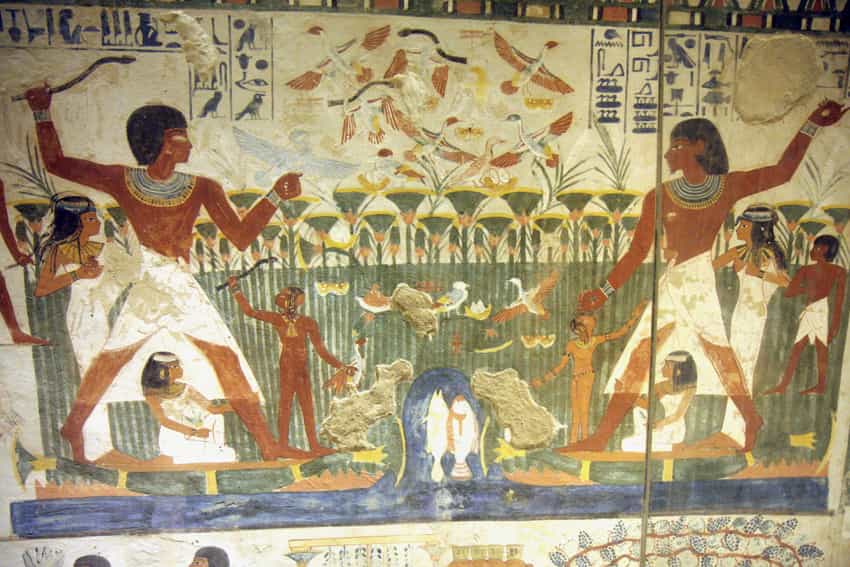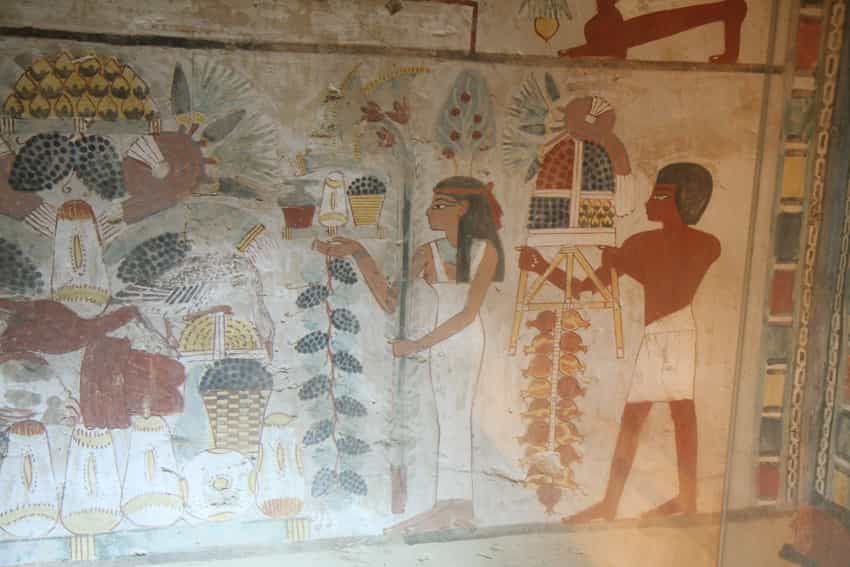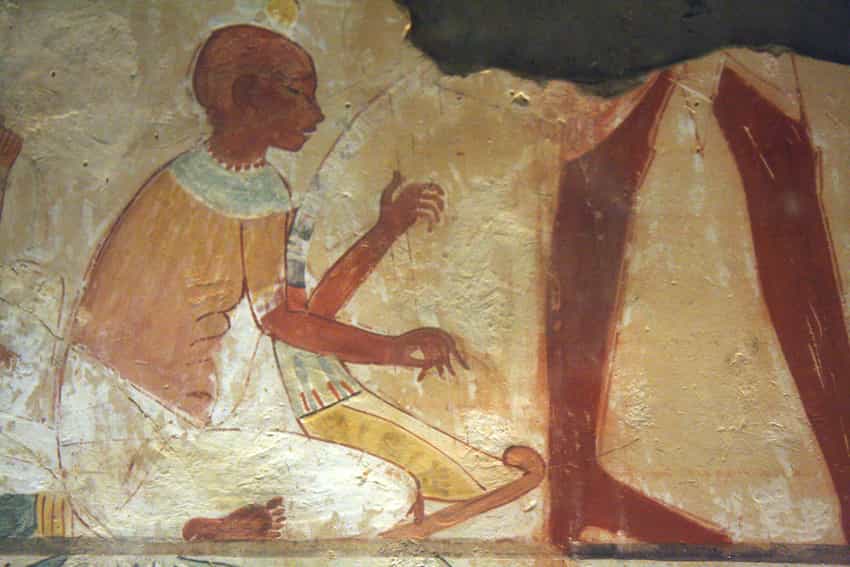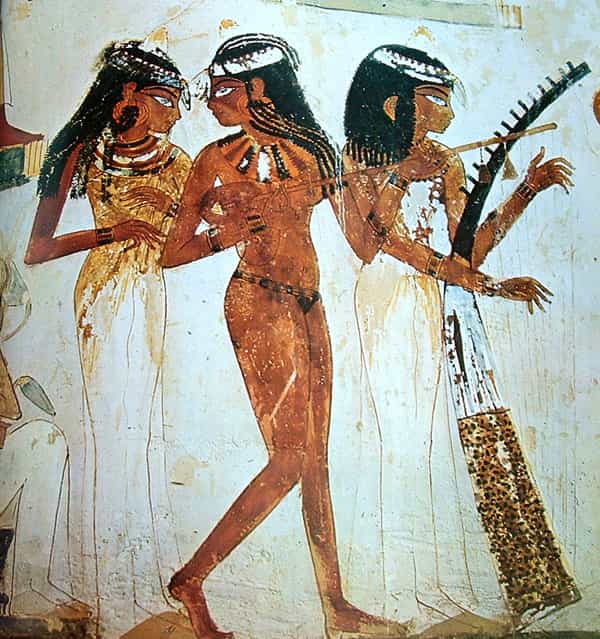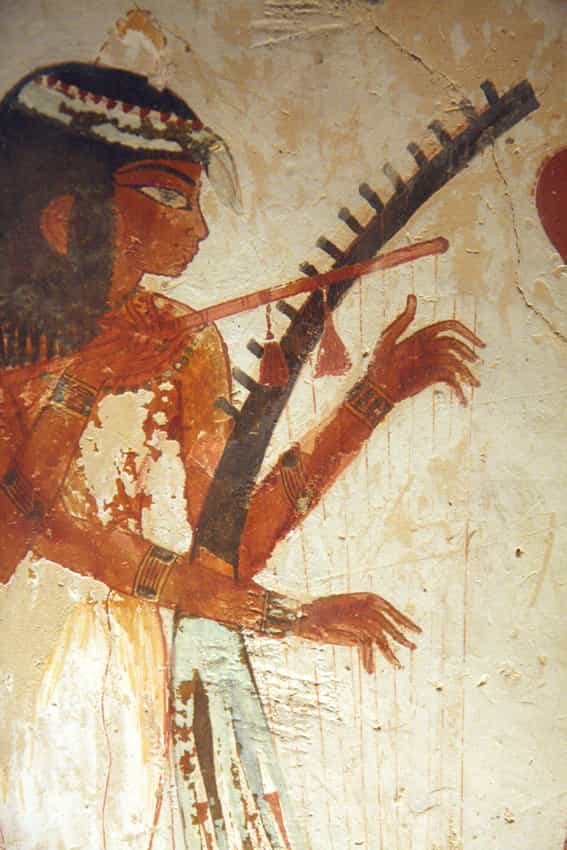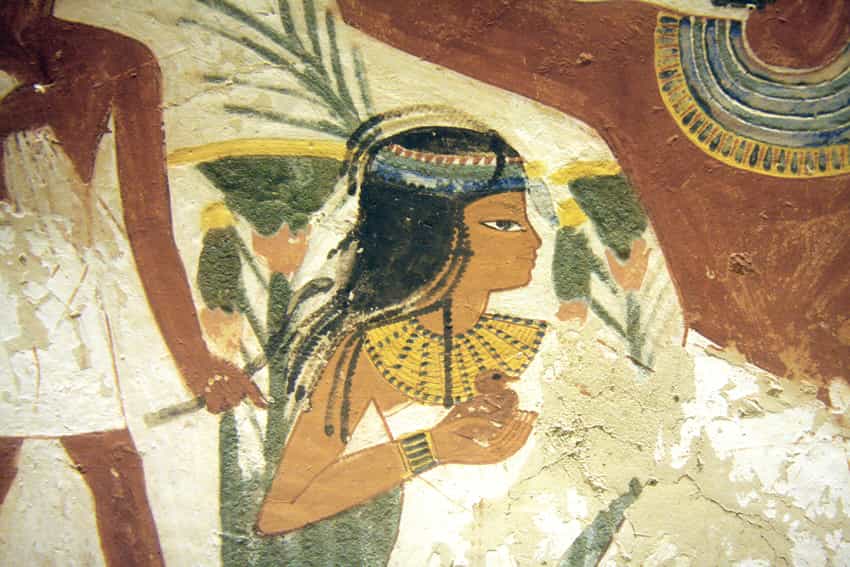Nakht’s tomb stands out as one of the most exquisitely adorned tombs of the New Kingdom (circa 1400 BC), renowned for its vibrant depictions of music and dance, replete with colors and vitality.
Situated in the necropolis of Sheikh Abd el-Qurna in Thebes, the tomb is the final resting place of Nakht, a priest of Amun, a scribe, and astronomer devoted to this deity and in the employ of Pharaoh Thutmose IV.
Evidently, Nakht delved into the study of stars, the sun, and the moon to determine the timing of rituals and religious festivities. Conversely, his wife, Tawy, was an artist dedicated to musical endeavors within the Temple of the god.
Our knowledge of their lives is derived from their tomb, an exquisite illustration of aristocratic tombs that, while possibly architecturally simple, were lavishly adorned with paintings.
Among the myriad wall paintings adorning the tomb, a central scene depicts Nakht and his wife making an offering, surrounded by smaller scenes portraying the couple’s servants engaged in various activities.
Most notably, a scene of the funeral banquet stands out, featuring female figures playing instruments such as the harp, flute, and lute.
These elegantly attired women showcase the grandeur of the New Kingdom of ancient Egypt, reflecting an evolution in pictorial representation. The dynamism is palpable, particularly in the central figure playing the lute, who turns towards her companion.
Other women are depicted with flutes arranged diagonally with respect to the body, and double flutes associated with dance. Noteworthy figures include a blind harpist and noble women attended by a maid adjusting her earrings, all while the banquet guests savor the delicacies.
Additional scenes depict the grape harvest and various agricultural tasks, including planting and harvesting, meticulously detailed. Scenes of hunting and fishing are also present, along with landscapes featuring papyrus flowers surrounded by beautiful birds and butterflies.
The tomb of Nakht encompasses a comprehensive representation of ancient Egyptian life and stands as one of the most treasured examples of Egyptian art.
